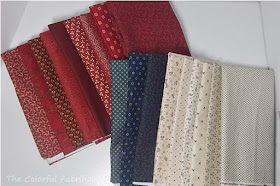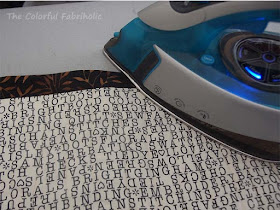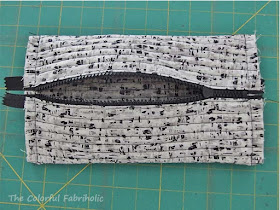April Goals Recap:
1. Make/finish Hands2Help quilt. DONE
2. Quilt Alaska gift quilt for Jackie. DONE
3. Keep up with Pat Sloan Solstice Challenge blocks. Mostly done; have not done the one for 4/26 because I've been in Paducah since before it was posted. But, I made an extra block earlier to test out my new die cutter.
4. Start planning a Christmas tree project requested by my son. DONE: Planned, fabrics collected, cutting started.
5. Make progress hand piecing my WIVSP Piecing Group project. No, not touched.
6. Keep up with bee blocks. Mostly done; I'm still working on the hand pieced block to get it done but it will be done by Tuesday night when it's due.
Other: Basted, quilted, and bound Dancing Plus II and posted a tutorial about how I do machine binding with glue basting. Here's a detail of the quilting & binding, but I need to get some good photos of the whole quilt. The color is not good here, and the wind was a little too "helpful" when I was trying to take photos.
May Goals:
1. Resolve label for Alaska quilt and get Alaska quilt labeled and bound.
2. Piece top for Christmas Tree project for 12 Days of Christmas in July.
3. Write & post Snake Quilt tutorial.
4. Bind Cherie's quilt from the boomerang patches.
5. If it comes back from the long armer, bind KBFG.
6. Work on WIVSP hand piecing project.
7. Keep up with Solstice Challenge and bee blocks.
April Stash Report
Okay, now that we've got the project accountability out of the way, let's look at the good stuff. I had some finishes so I can count out a lot of fabric used in April. But there were some local sales, and I indulged in serious stash building in Paducah, so I have to count a lot of fabric in.
Month IN: 42 yards (35-1/5 yds from Paducah; 6-1/2 yds from local sales)
Month OUT: 19-1/8 yards (3-5/8 yds for H2H race top; 4 yds H2H back; 1/2 yd H2H binding; 3-5/8 yds Alaska top; 2 yds wide backing for Alaska back; 4-3/4 yds DPII backing; 5/8 yd DPII binding;)
Month Net Change: 22-7/8 yards IN
YTD IN: 62 yards
YTD OUT: 54-3/8 yards
YTD Net Change: 7-5/8 yards IN. I can easily make that up by the end of the year, don't you think?
So, Paducah was so much fun. Girls' week out, gorgeous show quilts, plus fabric shopping! We spotted this rotary cutter at the AQS show.
We spotted Quilt Man, too.
So, my haul:
1. A few more greens for the Christmas tree project requested by my son. The triangles were already cut and I brought them along so I wouldn't duplicate any of those fabrics. The new fabrics are mostly FQs except for a half-yard of that ombre print, and a yard of the plaid for binding. Amount purchased: 3-1/4 yards.
2. Flannel: DH has requested a flannel quilt. I have several of his old flannel shirts, but not enough variety, so I was on a mission to find more flannels. The tan plaid on the right is my constant and/or background, so I bought 3 yards. The rest are either less than one-yard flat folds from the sale table, or half yard cuts. Total flannel yardage here: 7-5/8 yards.
3. Bindings and miscellaneous stash enhancement. I specifically need mostly black with bright white, and black with ivory. I don't have enough of anything in my stash. So, black binding prints. The rest of the fabrics here were from the flat fold sale table at Hancock's. Navy Grunge, natural Essex linen, some low volumes including a numbers print by Basic Grey, and a stripe that I liked for some future binding on something, I just like the color combo. Total 9-5/8 yards in this photo.
4. We always go to the Rotary exhibit of antique quilts every year, and there are vendors there too. One in particular I like, Nancy J, has packs of four coordinated FQs for $5. I picked up a couple of packs; one had a green that's in the photo above. These are just stash enhancement because I liked them. 1-3/4 yards here.
5. New project: I was very taken with one of the large quilts in the AQS show, very traditional, mostly reds. My stash is very lacking in reds, and I've been so into the more modern-ish fabrics lately that now traditional looks very warm and appealing to me. So armed with an inspiration, I collected a few traditional prints, 13-1/4 yards. I can use these for QOV projects, too. Most of these were flat folds from the sale table, color of the day at Eleanor Burns, or half-yard cuts at Hancock's.
Speaking of Hancock's, the best time to go is right when they open at 8:00. This has to be the least crowded I've ever seen Hancock's during quilt week!
All in all, April was a very good month. Now let's see if I can bust some of this new yardage in May!
Linkups: Patchwork Times, Molli Sparkles


















































